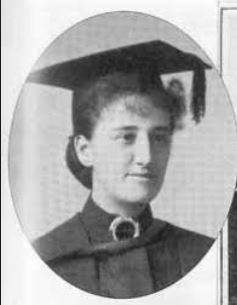Dorothea Chalmers Smith facts for kids
Elizabeth "Dorothea" Chalmers Smith (1874 – 1944) was an important doctor and a brave Scottish suffragette. Suffragettes were women who fought for the right to vote. Dorothea was even sent to prison for her actions, where she went on a hunger strike.
Contents
Early Life and Family
Dorothea Lyness was born in Dennistoun, a part of Glasgow, Scotland. She studied medicine at the University of Glasgow and became a doctor in 1894. After graduating, she worked at the Royal Samaritan Hospital for Women in Glasgow.
In 1901, she married Reverend William Chalmers Smith. He was a minister at Calton Church in Glasgow. Dorothea and William had six children together between 1900 and 1911.
Fighting for Women's Rights
In 1912, Dorothea Chalmers Smith joined the Women's Social and Political Union (WSPU). This group was known for its strong actions to get women the right to vote. Her husband did not agree with her extreme methods, as he believed women should stay at home.
Dorothea Chalmers Smith and artist Ethel Moorhead were involved in a protest in Glasgow on July 23, 1913. They were caught during their protest. Inside the building, police found items like matches and paraffin, along with a postcard that said: 'A protest against Mrs Pankhurst's re-arrest'. Mrs Pankhurst was a leader of the suffragette movement.
The Trial and Imprisonment
Their case went to the High Court. Many suffragettes came to support them. Dorothea and Ethel defended themselves and refused to accept the court's authority. Ethel Moorhead even interrupted the judge, saying they did not want to hear more.
Both women were sentenced to eight months in prison. When the sentence was announced, women in the courtroom protested loudly.
The Cat and Mouse Act
Once in prison, both Dorothea and Ethel started a hunger strike. This meant they refused to eat. When they became very weak, they were released from prison. This was under a new law called the Prisoners (Temporary Discharge for Ill Health) Act 1913. People called it the "Cat and Mouse Act."
This law allowed prisoners to be released if they became too ill from hunger striking. But it also meant they could be arrested again once they got better. Detectives watched Dorothea's house to make sure she did not escape. However, she sometimes managed to get out by dressing up in her younger sister's school uniform!
The WSPU gave Dorothea Chalmers Smith a special Hunger Strike Medal for her bravery.
Later Life and Legacy
After the First World War, Dorothea Chalmers Smith and her husband divorced. This was a difficult decision for a church minister at that time. She left with her three daughters.
Dorothea continued her important work. She worked in new child welfare clinics in Glasgow. She did pioneering work in helping children stay healthy. She also raised her daughters to become doctors, just like her.
Dorothea Chalmers Smith passed away in 1944. Her silver WSPU Hunger Strike medal was given to the People's Palace museum by one of her daughters. These medals were first given out by the WSPU in 1909.
A special tree, called the Suffragette Oak, was planted in Glasgow in 1918. It celebrates the first time women could vote in a general election. This tree stands as a memorial to brave women like Dorothea Chalmers Smith, Helen Crawfurd, Jessie Stephen, and Frances McPhun.



